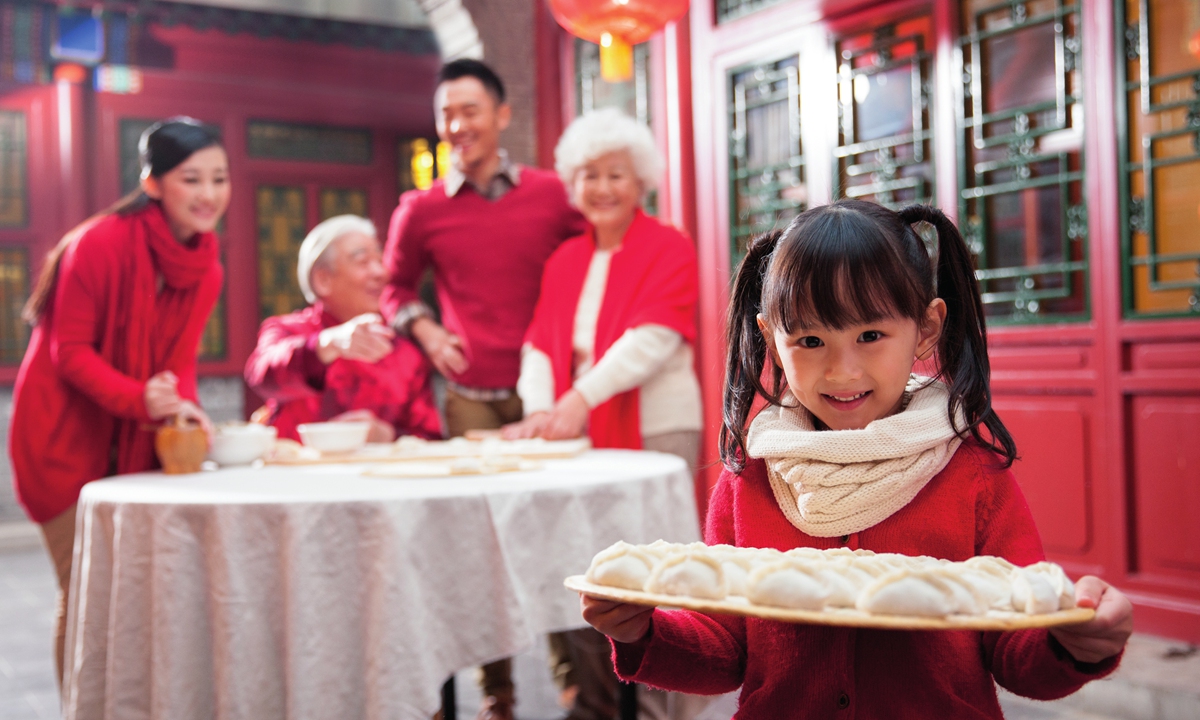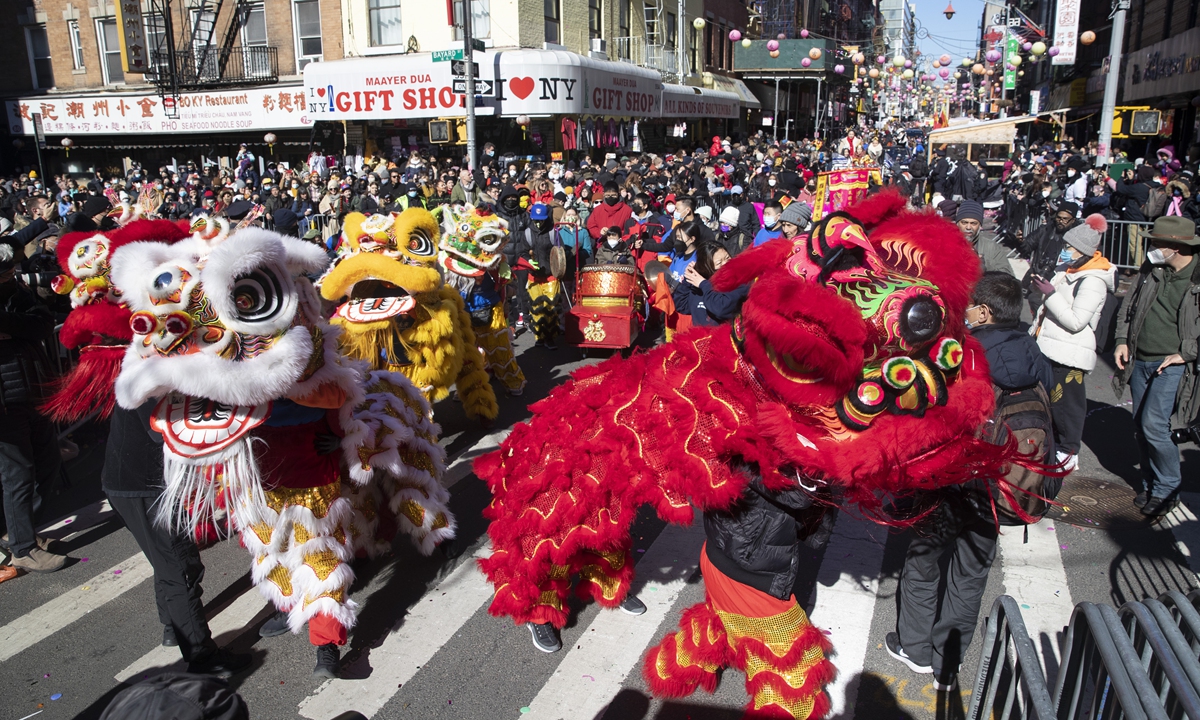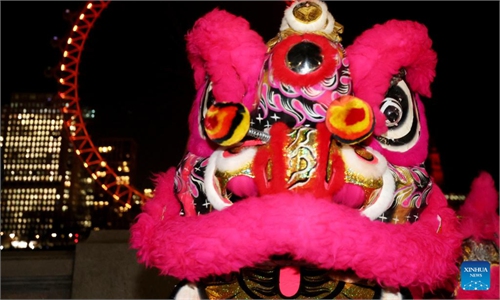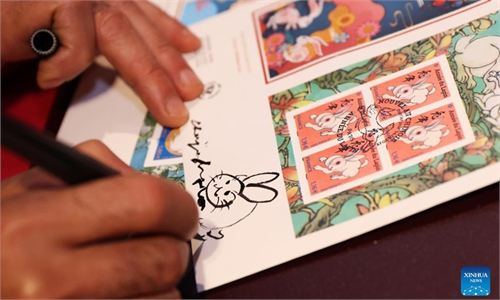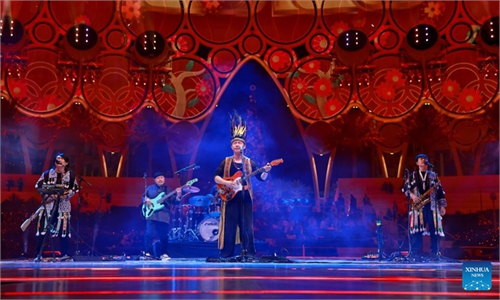ARTS / CULTURE & LEISURE
Generation Z mixes tradition, innovation as first post-pandemic Spring Festival approaches
Renovating inheritance
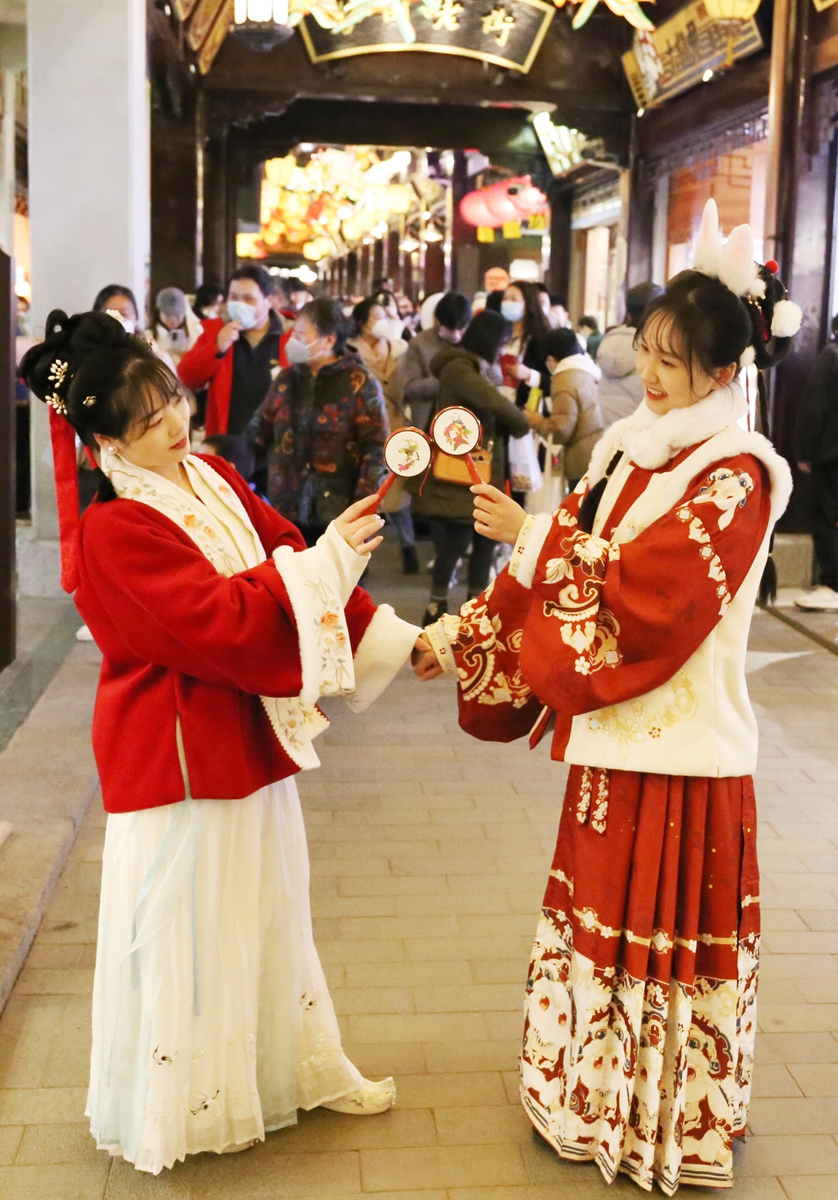
Two girls in Hanfu - traditional Chinese attire - pose during an occasion to welcome the Chinese New Year in Shanghai. File photo: IC
Editor's Note:
The Spring Festival is one of the most important holidays on the Chinese calendar. People living in China and around the world are looking forward to embracing the holiday with their hopes for a better future, especially at a time when the world is recovering from the COVID-19 pandemic.
With a history of more than 2,000 years, the Spring Festival, or chunjie, is still celebrated by billions of people. The festival has been continuously enriched by the many ethnic groups in China, evolving over the centuries to finally become a common festival for the Chinese nation.
Starting from neighboring countries like the Koreas and Japan, the Spring Festival followed in the footsteps of cultural exchanges, growing to become an important part of East Asian culture. Thanks to China's economic and cultural strength, the Spring Festival is now becoming a symbol of global culture.
In this three-issue series, the Global Times will explore and present the Spring Festival today and how it is becoming a global festival full of vitality.
Only one week ahead of the Spring Festival, Xia Dongmin, who just traveled from Beijing to his hometown in East China's Jiangxi Province, has decided to cook something different for the traditional Spring Festival Eve dinner.
To honor the fact that he has reunited with his family for the first time in three years, Xia has decided to take over for his parents and become the chef for their traditional dinner at home. Faced with this challenge, the young man started thinking a little bit out of the box and then inspiration struck when he saw some pre-made clay pot soup, a local dish of Jiangxi, being sold at a supermarket and he got the idea for a "pre-made" banquet.
Changes and inheritance
The 3-year pandemic has clearly changed the attitude of many young people toward life. For them, the Spring Festival, or the Chinese New Year, is no longer about wearing new clothes or collecting packets of "lucky" money as they did as children since they now have numerous alternate ways to entertain themselves.
However, this doesn't mean the end of tradition. On the contrary, Gen Z's enthusiasm for tradition is manifested in many ways, in some cases driving people overseas to witness the inclusiveness of this thousands-year-old festival in their own way.
"I also bought a lot of pre-made specialty dishes from other provinces, which means I can make dinner in less than half an hour. I'm not being lazy, but we need to find a delicate balance between ritual and convenience," the 29-year-old Xia told the Global Times.
"Many young people had begun to feel that the flavor of the Chinese New Year was gradually fading, but this did not dispel their yearning for traditional customs. From overseas Chinese students holding their own Spring Festival Galas and the way more young designers are integrating the festival into China chic works, we can see that they use their own ways to innovate on the traditions of the Spring Festival," Tan Shan, a Beijing-based sociologist, told the Global Times.
From celebrating the Chinese New Year to holding traditional Chinese clothing exhibitions, overseas students are also shouldering the mission of inheritance.
Zhang He, a student in Boston, told the Global Times that his university union will hold activities during the upcoming Spring Festival, but on Spring Festival Eve, he would like to spend the night with his friends.
"I think the meaning of the festival is more about getting together with others, so that's what I'm about to do," he said.
As the festival's influence has expanded, young people around the world are paying more attention to this thousands-year-old festival by celebrating it in their own way.
The comment section of famous Chinese rural life vlogger Li Ziqi's YouTube account is full of posts showing gratitude for the cultural influence she has had on the world.
"She talks about the meaning of the Spring Festival, which inspires people to embrace a new culture," commented one of her fans.
Other young people in foreign countries like the UK also celebrate the festival by getting a taste of Chinese culture.
Toutou, a UK social media influencer, joined a Spring Festival celebration in London's Chinatown where he danced with overseas Chinese students to the beat of a nostalgic but popular Chinese song called "Love Each Other."
Although Toutou said that he had never heard this song before and that he was not a good dancer, the young British man noted that he still enjoyed the dance because of the nice Chinese Spring Festival ambience at the event.
Inspired by tradition
When talking about the traditional Spring Festival dinner, Zhang said he found out that many of his friends are in fact "hidden chefs" who know how to innovate.
"We plan to use local ingredients to cook some Chinese delicacies and hopefully make an ingenious Spring Festival Eve dinner," he said in a voice filled with anticipation.
Both inheritance and innovation is not only reflected in the way overseas Chinese are celebrating the holiday, but also in the way young designers are turning symbols of the Spring Festival into trendy designs.
A large shopping mall in Jinan, East China's Shandong Province, has placed rabbit-inspired products and clothing accessories at prominent positions to attract customers.
"This year, what I'm excited about the most is that I'm about to bring my newly designed jewelry collection inspired by the 12 Chinese zodiac animals to a European exhibition fair," designer Yan Mengya told the Global Times.
"For Chinese, the Spring Festival is not only a simple celebration, but also a cultural symbol that can promote Chinese culture overseas," culture expert Fang Qiongyi told the Global Times.
"Those young Chinese chic designers who use Spring Festival as their inspiration break the boundaries between this important celebration and the world stage."
In addition, traditional Spring Festival couplets and New Year paintings are also becoming NFT (non-fungible token) collections, gaining a massive round of popularity among young collectors.
"The elements of the Spring Festival, including the 12 zodiac signs, are cultural symbols that accompany each one of us, providing contemporary designers with a steady stream of creative inspiration," noted Zhang Peiyuan, a visual art expert from the Shandong University of Art and Design.
"The development of relevant creative products is not only a kind of inheritance of traditional culture, but also allows the public to gain a new understanding of tradition," Zhang added.
